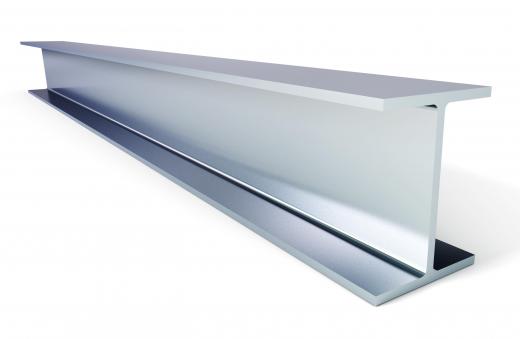A section beam is the name given to any structural steel member that is most commonly referred to by its cross-sectional appearance. Examples of different types of section beam include I-beams, H-beams, and Z-beams. This particular style of beam can be manufactured in one of two ways. It can be through rolling the section from a single piece of steel or by welding three individual steel members together to form the required cross section.
Three main parts comprise section beams, the web and two flanges. The web is the vertical section of the beam, while the flanges are the horizontal sections of the beam when viewed in cross section. The naming of the sections are determined by their appearance in cross section. For example, an I-beam will possess a long, vertical web in relation to the narrower flanges, while a Z-beam features a diagonal web attached to opposing sides of the upper and lower flanges.

Another type of section beam is the H-beam. This type of beam will either have a short web with two wide flanges, or the web and flanges will be of an equal size. H-section beams are highly effective as a simply supported beam and offer high levels of resistance to both vertical and horizontal loadings.
Different types of section beam possess differing strength characteristics. An I-beam possesses a high vertical loading capacity but is susceptible to torsional, or twisting, forces and offers little in the way of lateral strength. Z-beams, on the other hand, offer greater lateral strength, but this comes at the cost of reduced vertical loading capacities and torsional resistance.

Of the section beam types available, H-beams offer the greatest general consistency across the board of sectional forces. A key strength of an H-beam is in the end-on loading capacity. This is due to the structural resistance to bending in any direction. That is to say that placing a load on the end of a beam or column with an H cross section will not encourage the beam to bend in the same manner as an I-beam or Z-beam.
When placing an end loading on an section beam, the results can differ. In the case of an I-beam, the tendency will be for the member to bend to one side due to the low lateral strength provided by narrow flanges. Similarly, when using a Z-beam, the loading will encourage the member to twist around its central axis. It is for this reason that H-beams are also commonly used as structural columns or for ground-strengthening, load-bearing applications.
